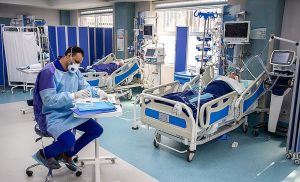Types of Spontaneous Modes
Just like control modes, there are several spontaneous modes available on the market, but unlike control modes, there is really only one that is mainly used. Pressure Support Ventilation (PSV) is by far the most common support mode utilized in critical care. Volume Support Ventilation (VSV) does exist, but it never gained traction in the market—most likely due to physiologic variability in volumes being a cornerstone of spontaneous breathing. We will focus on Pressure Support Ventilation as the main spontaneous mode.
Later in this chapter, Synchronized Intermittent Mandatory Ventilation (SIMV) will also be discussed. Thought of as a “mixed” mode—control and spontaneous, it is no longer a mode that has a significant place in ventilation. A brief discussion will be included regarding why SIMV is no longer used in intensive care units across North America.

Pressure Support Ventilation (PSV)
In PSV, every time a patient initiates a breath, the ventilator will push a set pressure of air to the patient while they spontaneously breathe in. The patient plays the only role in deciding how often to breathe and can also vary their volumes based on what they desire—for example, if they want to take a long and large breath, they can do this at any point. They can also breathe at a more rapid pace with smaller breaths if desired. The only fixed setting that will not change is the amount of support given to them by the ventilator. They cannot get more than the set “help pressure” unless the clinician comes and changes it.
PSV Basic Settings:
- Pressure Support (PS)
- PEEP (every ventilator, every time)
- FiO2 (every ventilator, every time)
What is NOT set:
- RR (patients must trigger all breaths)
- Flow or Itime (patients can take air in at whatever speed they want and end the breath when they want to. The vent will sense when inspiration and expiration start.)
FiO2 and PEEP are set on every ventilator—it is no different in spontaneous modes. In addition, in PSV, the amount of pressure support (PS) is the singular central setting that a clinician must set. The pressure support should be set at an amount that will allow the patient’s work of breathing to remain within normal limits. If they are getting worse, then they are “failing” and may need more support or a change back to a control mode of ventilation
Key Concept
Media Attributions
- Coronavirus © Fars Media Corporation is licensed under a CC BY (Attribution) license

